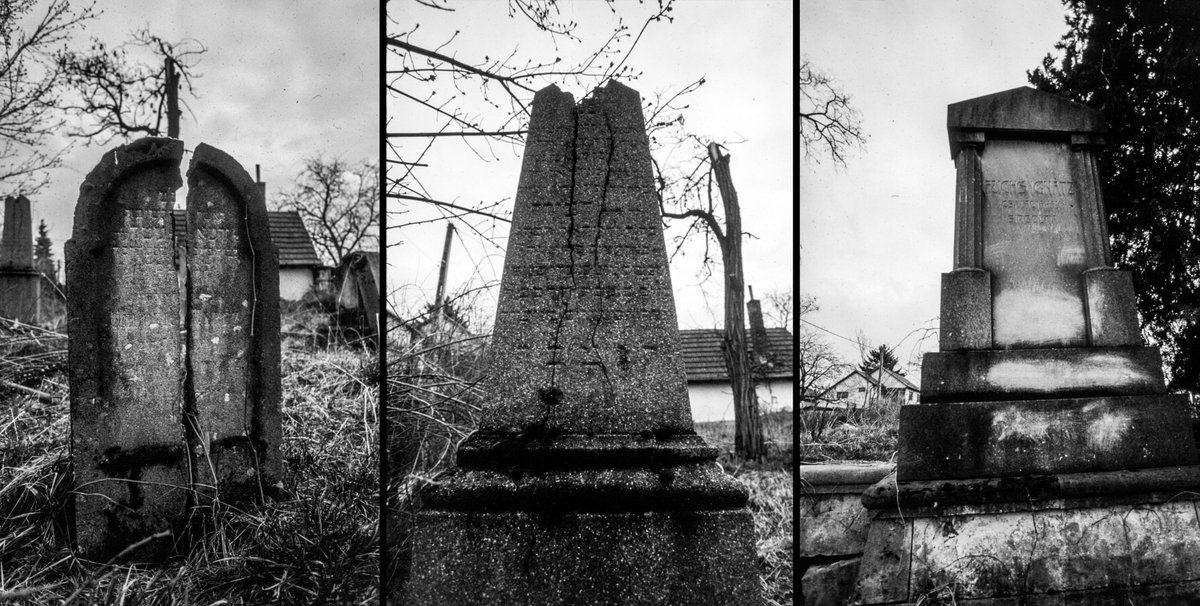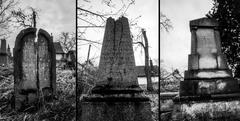
Old Jewish Cemetery Rákoskeresztúr: Visiting Hours, Tickets, and Historical Insights
Date: 15/06/2025
Introduction
The Old Jewish Cemetery in Rákoskeresztúr, also known as the Kozma Street Jewish Cemetery, stands as one of Budapest’s most significant historical and cultural landmarks. Established in the late 19th century during Hungary’s era of urban and cultural expansion, the cemetery is a testament to the city’s once-flourishing Jewish population. Today, it serves both as a sacred place of remembrance and as a living museum, showcasing the artistry, resilience, and heritage of Budapest’s Jewish community. Visitors encounter not only remarkable Art Nouveau mausoleums and intricate monuments but also the enduring memory of the Holocaust and the ongoing efforts to preserve Jewish heritage in Hungary.
For travelers, historians, architecture enthusiasts, and those seeking to understand Budapest’s multicultural past, the Old Jewish Cemetery at Rákoskeresztúr offers a profound and enlightening experience. This comprehensive guide provides historical context, visitor information—including opening hours and ticketing details—architectural highlights, and practical tips to ensure a meaningful and respectful visit.
Table of Contents
- Historical Context and Development
- Architectural Styles and Highlights
- Notable Figures and Memorials
- Holocaust Remembrance and Preservation
- Visitor Information
- Visitor Tips and Etiquette
- Nearby Jewish Heritage Sites
- Frequently Asked Questions (FAQ)
- Conclusion and Further Reading
Historical Context and Development
Foundation and Growth
The Old Jewish Cemetery in Rákoskeresztúr was established in 1891 to accommodate Budapest’s rapidly growing Jewish community (budapestjewishcemetery.com). Positioned on the city’s eastern outskirts and adjacent to the New Public Cemetery (Újköztemető), its location was strategic, reflecting the city’s urban development and the community’s increasing integration (pestbuda.hu). The cemetery was designed as both a sacred burial ground and a landscaped public space, featuring tree-lined avenues and tranquil lawns.
The Neolog Movement and Social Significance
The cemetery became a focal point for the Neolog Jewish movement, which embraced modernity while honoring tradition. This is reflected in the cemetery’s layout and the blend of Jewish symbolism with contemporary Hungarian architectural trends. The site quickly became the preferred resting place for Budapest’s Jewish elite, including rabbis, intellectuals, artists, and community leaders (hosszulepes.org).
Architectural Styles and Highlights
Art Nouveau and Hungarian Secession
The cemetery is famed for its Art Nouveau (Szecesszió) architecture, which flourished in Hungary at the turn of the 20th century. Architects such as Béla Lajta and Ödön Lechner introduced organic forms, flowing lines, and vibrant Zsolnay ceramics into mausoleum and monument design (offbeatbudapest.com). The Schmidl family mausoleum, a masterpiece by Lajta and Lechner, features striking blue tiles and floral motifs. Notably, many designs subtly blend Jewish iconography with Hungarian folk elements, reflecting the assimilationist tendencies of the Neolog community (posenlibrary.com).
Mausoleums and Artistic Features
The cemetery contains over 150 crypts and family vaults, many designed by prominent Hungarian architects including Béla Lajta, Géza Maróti, Alfréd Hajós, Ignác Alpár, Sándor Fellner, Zsigmond Quittner, and Kálmán Gerster (WeBudapest). Architectural styles range from Greek and Renaissance influences to unique Jewish motifs such as the Star of David, menorahs, and Hebrew inscriptions. The ceremonial building, completed in 1908 by Béla Lajta, was modeled after Rachel’s Tomb near Bethlehem, symbolizing a spiritual connection to the Holy Land.
Other notable features include:
- Decorative ironwork, stained glass, and mosaic details
- Sculptural elements such as angels, weeping willows, Kohanic hands, and Levite pitchers
- Family monuments with intricate Hebrew lettering
Notable Figures and Memorials
Mór Wahrmann
Mór Wahrmann (1832–1892) was Hungary’s first Jewish parliamentary representative and a leader of the Jewish Congress of 1868. His mausoleum, with design input from Zsigmond Quittner, features Greek and Renaissance elements and is modeled after the Anker House gate in Budapest’s Deák Square.
Dr. Emil Guttmann
A successful merchant and community leader, Dr. Emil Guttmann is memorialized with a tombstone featuring geometric designs and lion heads, crafted by Béla Lajta.
The Sváb Family
Prominent landowners, the Sváb family’s memorial, also attributed to Lajta, is distinguished by Hebrew lettering and mourning birds symbolizing grief.
Holocaust Remembrance and Preservation
Holocaust Memorials and Mass Graves
The cemetery is a solemn site of remembrance for Holocaust victims, including mass graves for those from Budapest’s wartime ghettos (Hosszúlépés). These communal graves mark a stark transition from individualized mausoleums to collective memory, reflecting the catastrophic loss suffered during World War II.
Conservation Efforts
Following closure in 1945, the cemetery faced periods of neglect and deterioration. Restoration initiatives by local and international organizations focus on preserving key monuments and architectural treasures, with ongoing documentation and advocacy for UNESCO World Heritage recognition (WeBudapest, greatsynagogue.hu).
Visitor Information
Location and Access
- Address: 1108 Budapest, Kozma Street 6 (Friends of Budapest Jewish Cemetery)
- Public Transport: Accessible by tram and bus from central Budapest. Taxis and ride-sharing are also available.
Visiting Hours
- Summer (last Sunday of March–last Sunday of October): 08:00–16:00, closed Saturdays
- Winter (last Sunday of October–last Sunday of March): 08:00–15:00, closed Saturdays
- Holidays: Closed on major Jewish holidays (e.g., Yom Kippur, Rosh Hashanah, Passover); open on national and Christian holidays (Friends of Budapest Jewish Cemetery)
Tickets and Tours
- Admission: Free; donations are welcome to support maintenance
- Guided Tours: Available by advance arrangement, especially for groups; fees apply and are managed via tour operators such as Hosszúlépés
Accessibility
Main paths are generally accessible, but older sections may be uneven or overgrown. Visitors with mobility needs should contact the cemetery office for assistance.
Visitor Tips and Etiquette
- Dress modestly; men are encouraged to wear a head covering
- Photography is permitted, but avoid photographing mourners or services
- Place small stones—not flowers—on gravestones as a traditional sign of respect
- Refrain from eating, drinking, or smoking within the cemetery
- Maintain a quiet, respectful demeanor at all times
Nearby Jewish Heritage Sites
- Kozma Street Jewish Cemetery: Known for its Art Nouveau mausoleums and notable graves (budapestjewishcemetery.com)
- Dohány Street Synagogue: The largest synagogue in Europe, with an adjacent Jewish Museum
- Jewish Museum Budapest: Provides deep historical context and artifacts
Combining these sites enriches an understanding of Budapest’s Jewish heritage.
Frequently Asked Questions (FAQ)
Q: Are there entrance fees?
A: Entry is free, but donations for maintenance are appreciated.
Q: How do I arrange a guided tour?
A: Contact tour operators such as Hosszúlépés in advance.
Q: Is the cemetery wheelchair accessible?
A: Main paths are accessible, but terrain in older sections may be uneven.
Q: What is the recommended dress code?
A: Modest attire; men should cover their heads, women should cover shoulders and knees.
Q: Can I take photographs?
A: Yes, but please be discreet and avoid photographing mourners.
Conclusion
The Old Jewish Cemetery in Rákoskeresztúr is a profound testament to Budapest’s Jewish heritage, combining architectural splendor, cultural history, and solemn remembrance. By visiting, you contribute to the preservation of this invaluable site and gain insight into the city’s multicultural past. Plan your visit in advance, respect the site’s customs, and consider a guided tour for deeper historical context.
Stay updated by visiting the Budapest Jewish Cemetery official site and Great Synagogue’s cemetery guide. Download the Audiala app for curated audio tours and local insights, and follow us on social media for the latest updates and heritage events.
Interactive Map of Budapest Jewish Heritage Sites
References and Further Reading
- Kozma Street Jewish Cemetery in Budapest: History, Architecture & Visitor Guide, 2023, Budapest Jewish Cemetery Official Site (budapestjewishcemetery.com)
- Visiting the Old Jewish Cemetery in Rákoskeresztúr: History, Architecture, and Visitor Information, 2024, Great Synagogue Budapest (greatsynagogue.hu)
- Old Jewish Cemetery Budapest: Visiting Hours, Tickets, Notable Memorials & Historical Insights, 2024, WeBudapest & Hosszúlépés (WeBudapest)
- Visiting the Old Jewish Cemetery in Rákoskeresztúr, Budapest: Hours, Tickets & Historical Insights, 2024, Friends of Budapest Jewish Cemetery (Friends of Budapest Jewish Cemetery)
- Hosszúlépés Tours - Old Jewish Cemetery of Budapest, 2024 (Hosszúlépés)








































































































































































